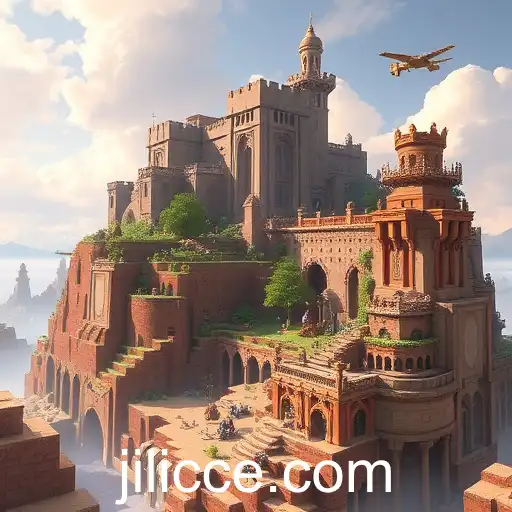Sandbox Worlds represent a captivating subset of video games centered on player agency, creativity, and expansive environments. This category has surged in popularity, offering gamers a unique blend of freedom and control, allowing them to craft experiences as structured or freeform as they desire. The term "sandbox" denotes an environment where players can manipulate, build, and explore with minimal constraints, much like a child in a literal sandbox, crafting worlds out of sand.
The allure of Sandbox Worlds lies in their open-ended nature, which contrasts sharply with the linear narratives and predefined outcomes that characterize many other game genres. Games in this category, such as Minecraft, Terraria, and more recently, titles like Valheim and No Man's Sky, empower players to traverse procedurally generated universes, construct elaborate structures, and craft personal stories within an expansive digital landscape.
One of the most compelling aspects of Sandbox Worlds is the emphasis on creativity. These games often provide a suite of tools that encourage players to construct and modify their environments. For instance, Minecraft, a pioneering force in this genre, offers a block-based world where players can mine resources, create structures, and survive against environmental challenges. The potential for creativity in these games is virtually limitless, and many players enjoy sharing their creations with the community, enhancing the communal aspect of these worlds.
The community aspect is an integral part of the Sandbox Worlds experience. Many games incorporate multiplayer functionalities, allowing players to share their virtual realms with friends and other users worldwide. This interactivity fosters a sense of community and collaboration, as players can engage in joint building projects, explore each other's creations, and partake in cooperative or competitive gameplay.
Moreover, Sandbox Worlds often serve as platforms for social interaction and community building. With in-game events, user-generated content, and thriving online forums, these games create spaces where players can interact, share experiences, and forge friendships based on shared interests and cooperative endeavors.
Another intriguing dimension is the educational potential of these games. Educators have begun to harness the power of Sandbox Worlds to foster learning experiences. For instance, the block-building mechanics of Minecraft have been used in classrooms to teach subjects ranging from mathematics to history, proving these games can have applications beyond entertainment.
The keyword "jilicc" might refer to a particular trend, game, or element within the Sandbox Worlds category, though its specific significance is not immediately apparent. However, the vibrant and ever-evolving landscape of Sandbox Worlds implies that new concepts and traditions, such as "jilicc," will continue to emerge, enriching the gaming experiences they offer.
In conclusion, Sandbox Worlds offer players a unique blend of creativity, exploration, and social interaction, catering to a wide array of gaming interests and playstyles. These games continue to evolve, promising new experiences and innovations that captivate players around the globe, affirming their status as a staple in the gaming industry.

An in-depth look at the captivating category of Sandbox Worlds in the gaming industry, with a focus on the evolving dynamics and experiences shaped by player creativity and freedom.




